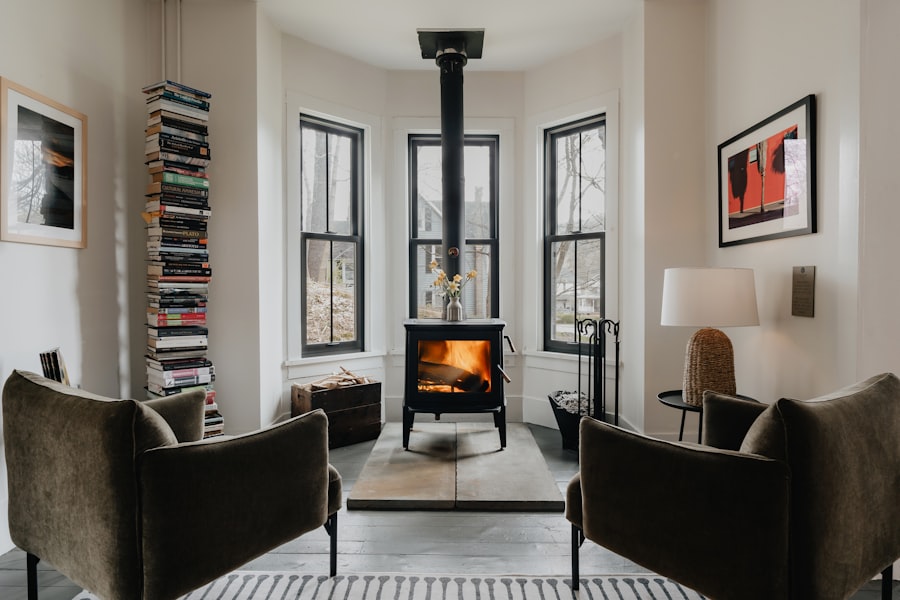Chickens have specific requirements for cold weather survival that are essential for their health and well-being. While generally hardy, chickens are still vulnerable to cold temperatures and require extra care during winter months. A warm, dry environment is crucial, as cold and damp conditions can lead to frostbite and respiratory issues.
Constant access to fresh water is necessary to prevent dehydration, which can occur even in cold weather. A balanced diet with increased energy content helps chickens maintain body heat. Adequate space for movement and exercise is vital for chickens’ physical and mental health, even in cold weather.
Prolonged confinement in small spaces can lead to stress and increased susceptibility to illness. The chicken coop should be well-insulated and draft-free to help maintain warmth. Protection from wind is also important for the birds’ comfort and health.
Understanding and meeting these needs is crucial for maintaining a healthy and thriving flock during winter. Proper care and attention to these factors can significantly improve chickens’ ability to withstand cold weather and remain productive throughout the season.
Table of Contents
- 1 Providing proper insulation for the chicken coop
- 2 Using heat-retaining materials for the coop
- 3 Utilizing natural heat sources
- 4 Using alternative heat sources
- 5 Ensuring proper ventilation in the coop
- 6 Monitoring the temperature regularly
- 7 FAQs
- 7.1 What are some ways to keep chickens warm without using light?
- 7.2 How can I insulate my chicken coop to keep it warm?
- 7.3 What is deep bedding and how does it keep chickens warm?
- 7.4 Are there any specific materials I should use to keep my chickens warm?
- 7.5 What temperature should I aim to maintain in the chicken coop during cold weather?
Key Takeaways
- Chickens need to be kept warm in cold weather to maintain their health and egg production
- Proper insulation in the chicken coop is essential to keep the chickens warm
- Heat-retaining materials such as straw and hay can help maintain warmth in the coop
- Natural heat sources like sunlight can be utilized to keep the coop warm
- Alternative heat sources like heat lamps or heated pads can be used to supplement warmth in the coop
- Proper ventilation is crucial to prevent moisture buildup and maintain air quality in the coop
- Regular temperature monitoring is necessary to ensure the coop remains at a comfortable and safe temperature for the chickens
Providing proper insulation for the chicken coop
Insulation Materials
There are several options for insulating a chicken coop, including using insulation materials such as fiberglass or foam board. These materials can be installed in the walls, ceiling, and floor of the coop to help retain heat and keep out drafts.
Natural Insulation Options
Another option for insulating a chicken coop is to use natural materials such as straw or hay. These materials can be used to line the walls and floor of the coop, providing an extra layer of insulation and warmth for your chickens.
Additional Insulation Tips
Proper insulation is crucial for maintaining a comfortable temperature inside the coop and protecting your flock from the effects of cold weather. In addition to insulating the walls and floor of the coop, it’s important to insulate any windows or vents to prevent drafts. Covering windows with plastic sheeting or using insulated covers for vents can help to keep out cold air while still allowing for ventilation. It’s also important to insulate the doors of the coop to prevent drafts and keep in heat. Adding weather stripping or draft guards to the doors can help to create a tight seal and keep out cold air.
Using heat-retaining materials for the coop

In addition to proper insulation, using heat-retaining materials in the construction of the chicken coop can help to maintain a warm environment for your flock. Materials such as wood, which has natural insulating properties, can help to retain heat inside the coop. Wood also provides a sturdy and durable construction material for the coop, helping to protect your flock from the elements.
Another option for heat-retaining materials is stone or brick, which can absorb heat during the day and release it slowly at night, helping to maintain a consistent temperature inside the coop. These materials can be used in the construction of the walls and floor of the coop to help retain heat and create a cozy environment for your chickens. In addition to using heat-retaining materials in the construction of the coop, providing plenty of bedding inside the coop can help to keep your flock warm.
Materials such as straw, hay, or wood shavings can be used as bedding to provide insulation and warmth for your chickens. Bedding should be kept clean and dry, as damp bedding can lead to health issues for your flock. Providing plenty of bedding inside the coop can help to create a warm and comfortable environment for your chickens during the winter months.
Utilizing natural heat sources
Utilizing natural heat sources can help to keep your chicken coop warm without relying on electricity or other artificial means of heating. One natural heat source that can be utilized in the chicken coop is sunlight. Positioning the coop so that it receives plenty of sunlight during the day can help to warm the interior and provide natural light for your flock.
Additionally, installing windows in the coop can help to capture sunlight and provide warmth for your chickens. Another natural heat source that can be utilized in the chicken coop is compost. Compost generates heat as it decomposes, which can help to warm the coop when placed nearby.
This natural heat source not only provides warmth but also helps with waste management on the farm. Another natural heat source that can be utilized in the chicken coop is geothermal energy. By digging down into the ground, you can tap into the natural heat stored in the earth’s crust.
This can help to maintain a consistent temperature inside the coop, providing warmth for your flock without relying on external sources of heat. Utilizing natural heat sources is an eco-friendly and cost-effective way to keep your chicken coop warm during the winter months.
Using alternative heat sources
In addition to natural heat sources, there are several alternative heat sources that can be used to keep your chicken coop warm during cold weather. One option is to use heated waterers or heating pads designed specifically for poultry. These devices provide a source of warmth for your chickens without raising the temperature inside the entire coop.
Another alternative heat source that can be used in the chicken coop is a radiant heater. Radiant heaters provide focused warmth without creating drafts, making them an effective option for keeping your flock warm during cold weather. Another alternative heat source that can be used in the chicken coop is a heat lamp.
Heat lamps provide a concentrated source of warmth that can be directed towards specific areas of the coop, such as roosting perches or nesting boxes. It’s important to use caution when using heat lamps, as they can pose a fire hazard if not used properly. Additionally, it’s important to monitor your flock closely when using heat lamps, as they can cause burns if chickens come into direct contact with them.
Using alternative heat sources can help to keep your chicken coop warm and comfortable during cold weather, providing a cozy environment for your flock.
Ensuring proper ventilation in the coop

Preventing Moisture Buildup and Respiratory Issues
Proper ventilation is crucial for maintaining a healthy environment inside the chicken coop during cold weather. While it may seem counterintuitive, ventilation helps to remove excess moisture from the air, preventing condensation on surfaces and keeping bedding dry. This, in turn, prevents moisture buildup, which can lead to respiratory issues for your flock.
Removing Odors and Gases
Ventilation also helps to remove odors and gases from the coop, creating a healthier environment for your chickens. By installing vents or windows that can be opened and closed as needed, you can control airflow inside the coop, adjusting it based on weather conditions and temperature.
Installing Vents and Maintaining the Coop
It’s essential to position vents or windows so that they allow for airflow without creating drafts that could make it difficult for your flock to stay warm. Another option is to install a ridge vent or cupola on the roof, which allows hot air and moisture to escape while preventing drafts from entering. In addition to providing adequate ventilation, regular cleaning and maintenance of the coop are crucial for preventing moisture buildup and ensuring a healthy environment for your flock.
Monitoring the temperature regularly
Monitoring the temperature inside the chicken coop regularly is essential for ensuring that your flock stays warm and comfortable during cold weather. It’s important to invest in a reliable thermometer that can be placed inside the coop to monitor temperature levels. This allows you to keep track of how warm or cool it is inside the coop and make adjustments as needed.
Monitoring temperature regularly also helps you identify any potential issues with heating or insulation before they become serious problems. In addition to monitoring temperature levels inside the coop, it’s important to observe your flock for signs of discomfort or illness related to cold weather. If you notice that your chickens are huddling together or appear lethargic, it may be a sign that they are too cold.
Making adjustments to heating or insulation based on these observations can help to keep your flock warm and healthy during cold weather. Regularly monitoring temperature levels inside the chicken coop allows you to provide proactive care for your flock and ensure their well-being during winter months. In conclusion, understanding and meeting the needs of chickens in cold weather is essential for ensuring their health and well-being during winter months.
Providing proper insulation, using heat-retaining materials, utilizing natural and alternative heat sources, ensuring proper ventilation, and monitoring temperature levels regularly are all crucial aspects of caring for chickens in cold weather. By taking these measures, you can create a warm and comfortable environment for your flock, allowing them to thrive even when temperatures drop outside.
If you’re looking for ways to keep your chickens warm without using light, you may also be interested in learning about what vegetables quails eat. Check out this article to discover the best vegetables to feed your quails for optimal health and nutrition.
FAQs
What are some ways to keep chickens warm without using light?
Some ways to keep chickens warm without using light include providing adequate insulation in the coop, using deep bedding for warmth, and using heat-retaining materials such as straw or hay.
How can I insulate my chicken coop to keep it warm?
You can insulate your chicken coop by sealing any drafts, adding extra layers of insulation to the walls and ceiling, and using insulating materials such as foam board or reflective insulation.
What is deep bedding and how does it keep chickens warm?
Deep bedding involves adding a thick layer of organic material such as straw, hay, or wood shavings to the floor of the coop. As the bedding decomposes, it generates heat, which helps to keep the coop warm.
Are there any specific materials I should use to keep my chickens warm?
Materials such as straw, hay, and wood shavings are excellent for providing warmth in the coop. These materials are natural insulators and can help retain heat.
What temperature should I aim to maintain in the chicken coop during cold weather?
During cold weather, it’s ideal to maintain a temperature of around 45-50 degrees Fahrenheit in the chicken coop to keep the chickens comfortable and healthy.
Meet Walter, the feathered-friend fanatic of Florida! Nestled in the sunshine state, Walter struts through life with his feathered companions, clucking his way to happiness. With a coop that’s fancier than a five-star hotel, he’s the Don Juan of the chicken world. When he’s not teaching his hens to do the cha-cha, you’ll find him in a heated debate with his prized rooster, Sir Clucks-a-Lot. Walter’s poultry passion is no yolk; he’s the sunny-side-up guy you never knew you needed in your flock of friends!







